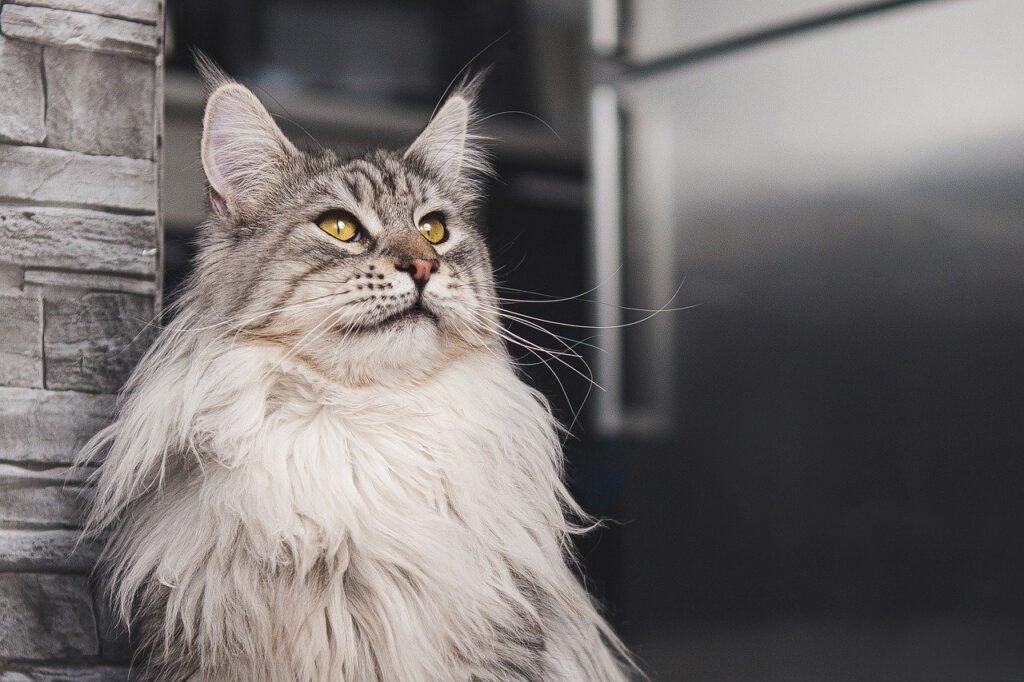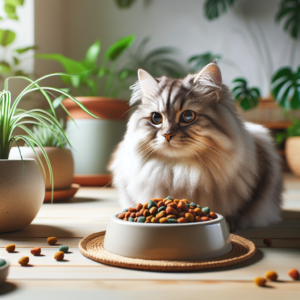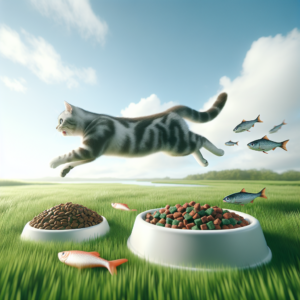
A cat’s coat is often one of the first things people notice about their feline friend. A glossy, lustrous coat is not just about aesthetics; it reflects your cat’s overall health and well-being. Several factors contribute to the condition of your cat’s coat, including diet, grooming, and environmental factors. In this article, we’ll explore top tips for maintaining a shiny and healthy coat for your cat.
Diet: The Foundation of a Healthy Coat
The saying “you are what you eat” holds true for cats as well. A balanced and nutritious diet is crucial for maintaining a healthy coat. Here’s how nutrition impacts your cat’s fur:
Essential Fatty Acids
Omega-3 and Omega-6 fatty acids are vital for maintaining skin health and a shiny coat. These fats help reduce inflammation and promote skin hydration. Look for cat foods that contain fish oil, flaxseed oil, or chicken fat to ensure your cat is getting an adequate supply.
High-Quality Protein
Cats are obligate carnivores, meaning they require a diet high in animal protein. Protein is essential for fur growth and repair. Ensure your cat’s diet includes high-quality sources of protein, such as chicken, turkey, or fish.
Vitamins and Minerals
Vitamins A, E, and B are crucial for skin and coat health. Vitamin A aids in skin cell regeneration, Vitamin E acts as an antioxidant, and B vitamins support overall skin health. Minerals like zinc and copper are also important for maintaining the coat’s sheen and texture.
Regular Grooming: More Than Just a Beauty Routine
Grooming plays a significant role in maintaining a healthy coat. Regular grooming not only helps prevent matting and tangles but also stimulates the skin and distributes natural oils throughout the fur.
Brushing
Brushing your cat’s coat once or twice a week helps remove loose hair and prevents matting. Long-haired breeds may require more frequent brushing. Use a brush suitable for your cat’s fur type to avoid any damage.
Bathing
Most cats do not need frequent baths, but occasional bathing can help remove dirt and excess oils. Use a cat-specific shampoo that is gentle on their skin. Always rinse thoroughly to avoid any residue that could irritate their skin.
Professional Grooming
For breeds with long or thick coats, professional grooming might be necessary. A professional groomer can help with trimming and maintaining the coat’s health and appearance.
Managing Stress: The Hidden Impact on Fur Health
Stress can have a profound impact on your cat’s coat. Cats often express stress through over-grooming or neglecting grooming altogether, which can lead to fur loss or a dull coat.
Providing a Safe Environment
Ensure your cat has a safe, comfortable space to relax. Minimize loud noises and sudden changes in their environment.
Regular Play and Interaction
Engage your cat in regular playtime to reduce stress and anxiety. Interactive toys and regular human interaction can help keep your cat happy and stress-free.
Veterinary Consultation
If you notice excessive grooming or fur loss, consult with your veterinarian. These behaviors might indicate underlying stress or health issues that need to be addressed.
Hydration: The Often Overlooked Element
Proper hydration is crucial for maintaining healthy skin and a shiny coat. Dehydration can lead to dry, flaky skin and a dull coat.
Encourage Water Intake
Ensure your cat has constant access to fresh water. Some cats prefer running water, so consider investing in a cat water fountain.
Wet Food Diet
Incorporating wet food into your cat’s diet can help increase their overall water intake, as it contains more moisture than dry kibble.
Environmental Factors: Creating the Right Atmosphere
Your cat’s environment can also affect the condition of their coat. Consider these factors to ensure your cat’s environment supports their coat health.
Proper Humidity Levels
Dry air can lead to dry skin and a dull coat. Use a humidifier in your home, especially during the winter months, to maintain optimal humidity levels.
Clean Living Space
Regularly clean your cat’s bedding and living area to reduce exposure to dust, dirt, and allergens that could affect their skin and coat.
Addressing Allergies and Medical Conditions
Sometimes, a dull coat might be indicative of allergies or other medical conditions. It’s important to address these issues promptly.
Identifying Allergies
Allergies can cause itching and skin irritation, leading to a dull coat. Work with your veterinarian to identify and manage any allergies your cat might have.
Treating Underlying Health Issues
Conditions such as hypothyroidism, parasites, or skin infections can impact coat health. Regular veterinary check-ups are essential to detect and treat any underlying health issues early.
Conclusion
A lustrous cat coat is a sign of good health and proper care. By focusing on diet, grooming, stress management, hydration, and environmental factors, you can ensure your cat’s coat remains shiny and healthy. Always pay attention to any changes in your cat’s coat, as they can be indicators of underlying health issues. With these top tips, you’ll help your feline friend look and feel their best.
“`
#ChatGPT assisted in the creation of this article.







